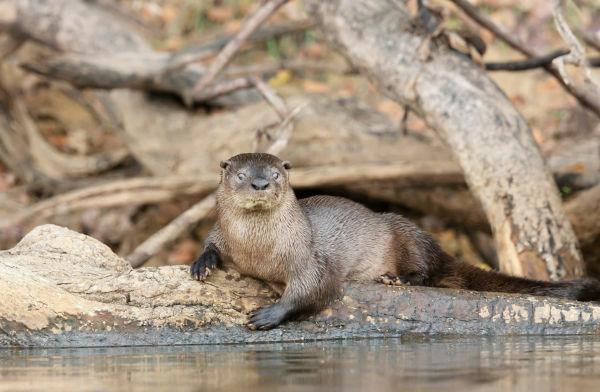Kingdom animalia
Phylum Chordata
Class Amphibia
Order tail
The Amphibia Class is divided into three Orders: the Gymnophiona, represented by the blind snakes and caecilians; Anura, whose representatives are toads, frogs and tree frogs; and, finally, the Caudata Order. In this one, we have as representatives the newts and salamanders, comprising about 440 species.
Most individuals in this group, whose representatives have an elongated body, with two pairs of short legs and a tail, have aquatic habits. In these cases, its development is indirect. Unlike lizards and geckos, these animals do not have scales or nails, and their cloaca is longitudinally positioned in relation to the plane of the trunk. In addition, they move around performing lateral oscillations, similar to fish; and some species have venom.
Several caudates tend to keep some of their larval characteristics during adult life, such as the gills - this phenomenon is called paedomorphosis - and, in adverse situations, they can undergo metamorphosis.
These animals are found predominantly in temperate regions of the planet, such as the Northern Hemisphere. In Brazil, we have a single representative of the Caudata order: the salamander Bolitoglossa paraensis.
Do not stop now... There's more after the advertising ;)
This species usually lives in trees, more precisely in the bifurcations of these, hidden among fallen leaves that are usually moist. This fact is very important, considering that these individuals have skin breathing and absent lungs: characteristics of the Plethodontidae family, to which they belong.
Feeding is composed of small invertebrates and is carried out at night. As for reproduction, females tend to take care of eggs deposited in their habitat.
According to the International Union for the Conservation of Nature and Natural Resources (IUCN), the Brazilian salamander has data insufficient as to its conservation status, a fact that can be understood due to its distribution, restricted to the region Amazon. For this reason, some researchers consider it vulnerable in the habitats in which it lives, as changes in these environments can compromise the species.
By Mariana Araguaia
Graduated in Biology
Would you like to reference this text in a school or academic work? Look:
ARAGUAIA, Mariana. "Salamanders and newts (Order Caudata)"; Brazil School. Available in: https://brasilescola.uol.com.br/animais/salamandras-tritoesordem-caudata.htm. Accessed on June 27, 2021.

